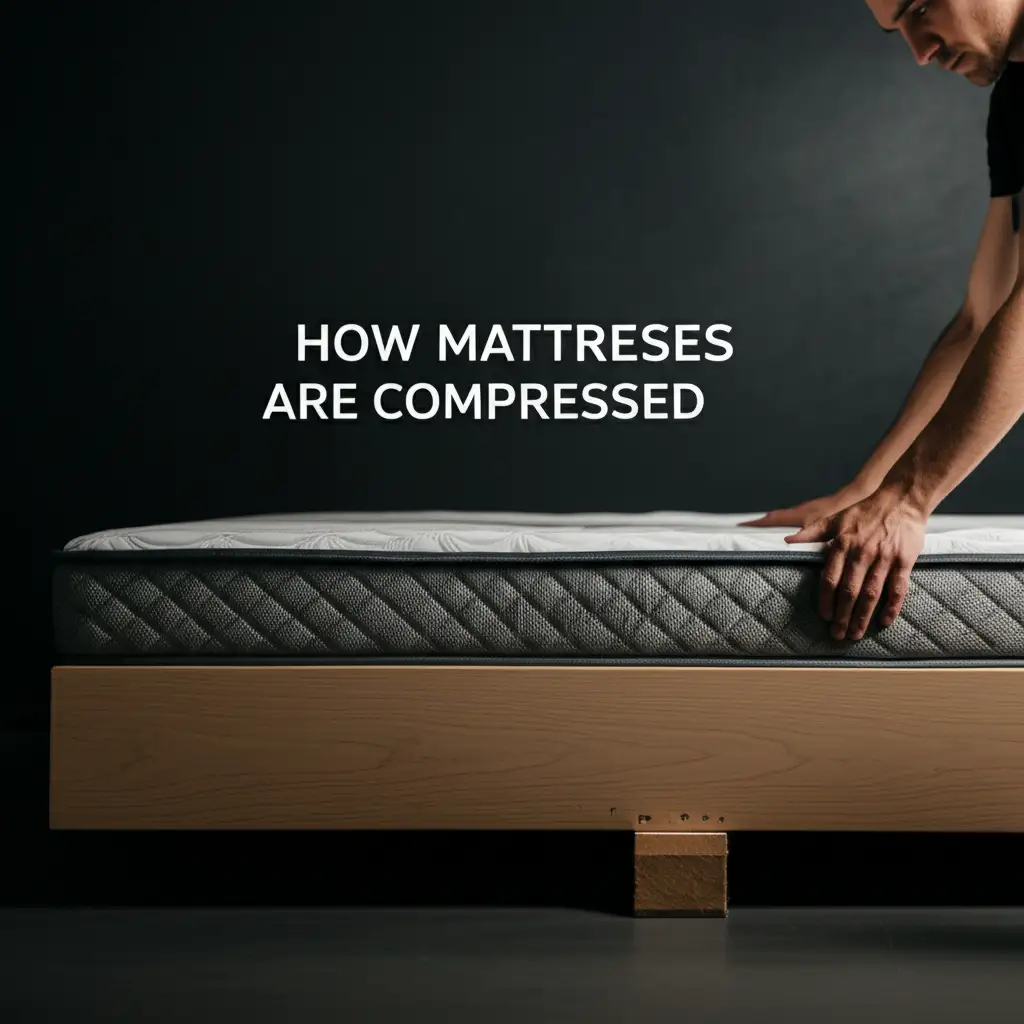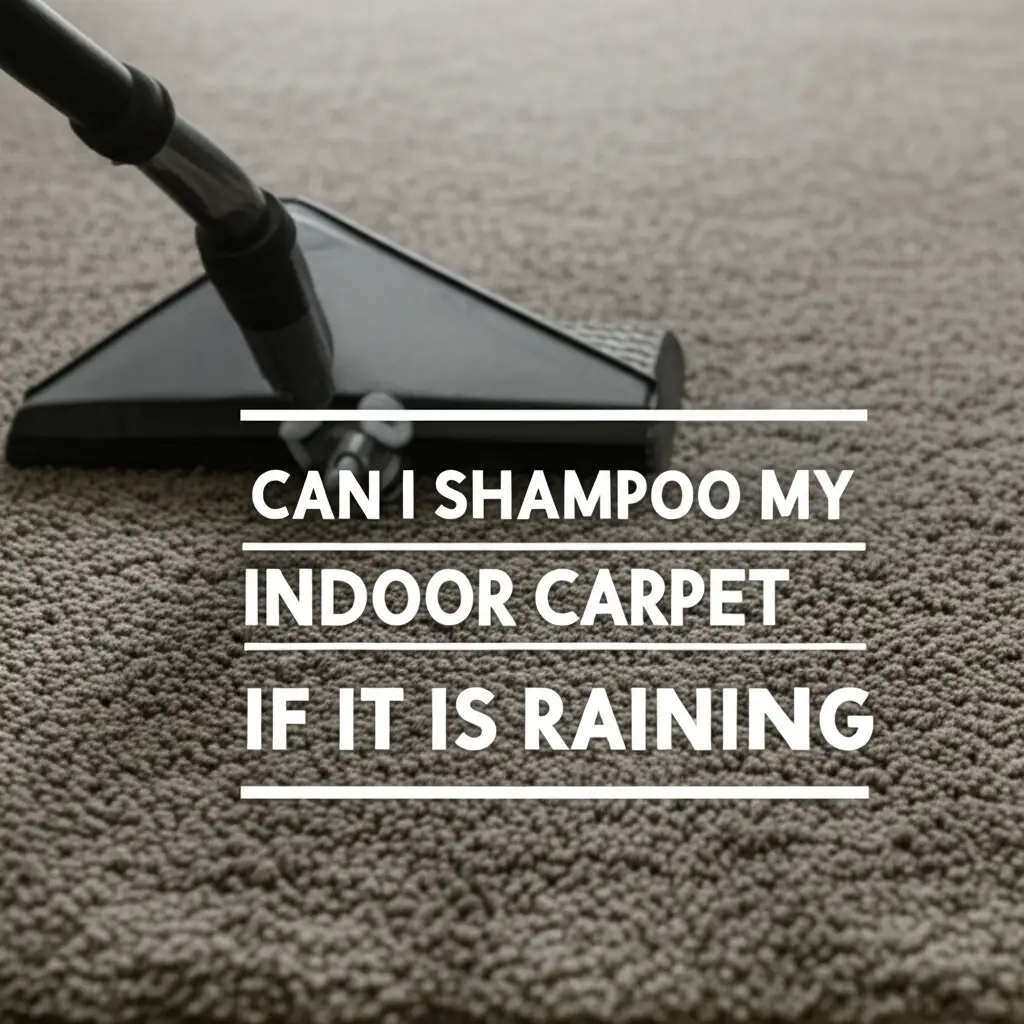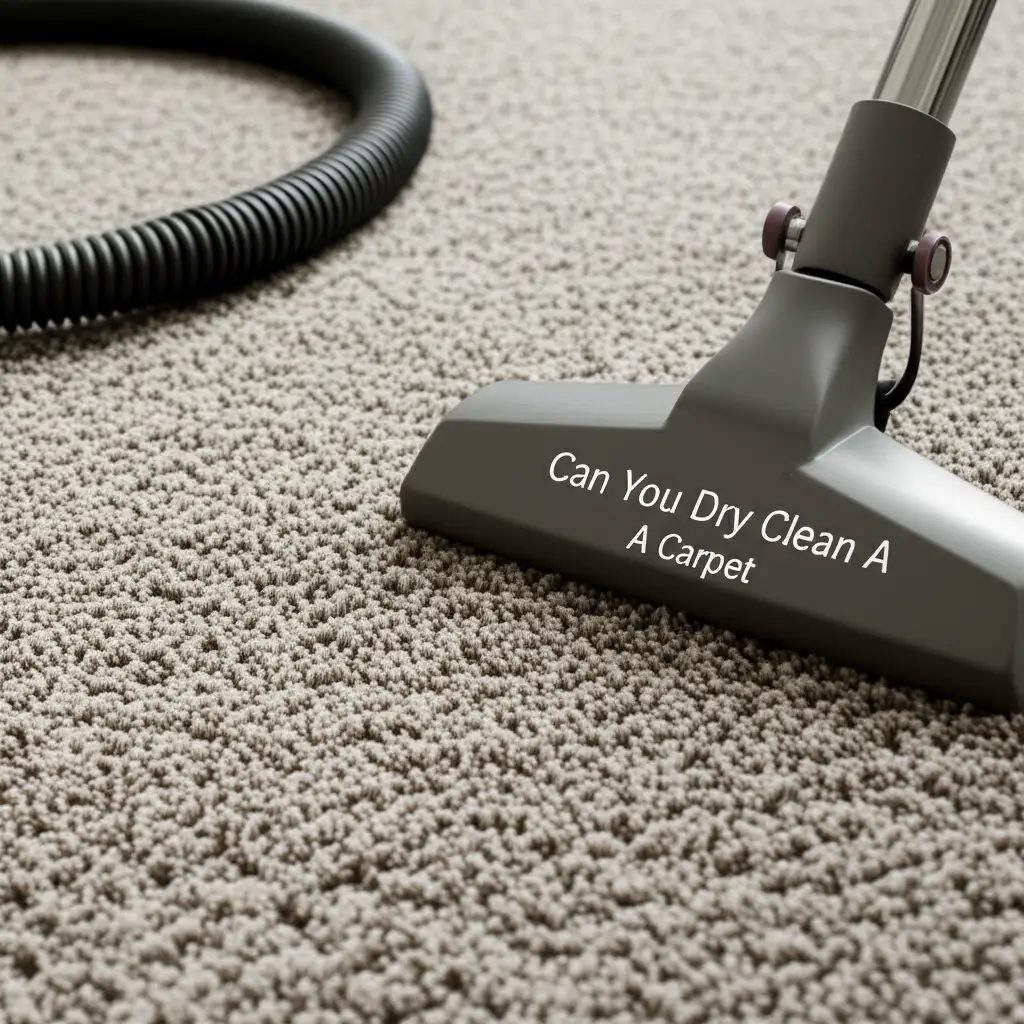· Elira Thomsen · Sleep & Bedding · 14 min read
How Mattresses Are Compressed

Mastering Mattress Compression: The Bed-in-a-Box Secret
Do you ever wonder how a large, soft mattress fits into a small box that arrives at your door? This process, known as mattress compression, changed how people buy and receive beds. It allows manufacturers to ship mattresses efficiently. We will explain how mattresses are compressed, what types of mattresses can undergo this process, and the equipment used. You will also learn about the benefits of compressed mattresses for both buyers and sellers. Get ready to understand the entire journey from factory floor to your bedroom.
Takeaway
- Mattress compression uses powerful machines to flatten and roll beds.
- This process makes mattresses much smaller for shipping and handling.
- Most foam and some hybrid mattresses compress well.
- Buyers enjoy easier delivery and setup.
- Manufacturers save money on storage and transport.
Clear and Concise Answer
Mattresses are compressed using large industrial machines that apply significant pressure to flatten the bed. The flattened mattress is then vacuum-sealed in plastic to maintain its compact shape, and finally rolled or folded for packaging into a box. This process makes shipping and handling much simpler and more cost-effective.
The Journey of Mattress Compression: A Modern Marvel
Modern technology makes it possible to shrink a full-sized mattress down to a manageable box. This process is a significant part of the bed-in-a-box industry. It involves several precise steps and specialized equipment. Understanding how mattresses are compressed can help you appreciate the convenience they offer.
Many people find it amazing to see a mattress expand from its small package. This transformation highlights the effectiveness of compression. Manufacturers work hard to ensure the mattress keeps its quality after compression and expansion. This method benefits everyone involved in the mattress supply chain.
For example, I once ordered a bed-in-a-box, and the small package was so easy to carry. When I opened it, watching the mattress inflate was like magic. This convenience is a direct result of effective mattress compression.
The compression process begins right after the mattress is made. Quality checks happen before the mattress enters the compression machine. This ensures only perfect mattresses are compressed.
Types of Mattresses That Can Be Compressed
Not all mattresses can undergo compression. The ability to compress depends largely on the mattress materials. Foam mattresses, including memory foam and polyfoam, are the easiest to compress. Their flexible structure allows them to flatten and roll without damage.
Hybrid mattresses, which combine foam layers with coils, also compress well. However, the coil system needs to be designed for compression. Pocketed coils, where each coil moves independently, are suitable for this. Traditional innerspring mattresses, with their interconnected coil systems, do not compress effectively. The rigid structure of these older coil types would bend or break under the pressure.
Latex mattresses can also be compressed. Natural latex is very durable and springs back to shape easily. Synthetic latex also performs well in compression. The elasticity of latex makes it a good candidate for the bed-in-a-box model.
When you buy a compressed mattress, it will almost always be foam, hybrid, or latex. These types are durable enough to withstand the process. They also regain their original shape and feel quickly after unboxing.
Essential Equipment Used in Mattress Compression
Compressing a mattress requires specialized heavy machinery. These machines are designed to apply immense pressure evenly across the mattress surface. The main equipment includes compression rollers, vacuum sealing machines, and rolling or folding devices. Each piece plays a key role in making the mattress small enough for boxing.
First, the mattress moves along a conveyor belt. It then enters a compression machine. This machine uses large rollers or presses to flatten the mattress. The pressure removes most of the air within the mattress layers. This reduces its height significantly.
Next, the flattened mattress immediately moves to a vacuum sealing station. Here, thick plastic wraps around the mattress. A powerful vacuum pump removes the remaining air from inside the plastic. This creates a tight, airtight seal. The vacuum seal is important because it keeps the mattress compressed.
Finally, the sealed, flattened mattress goes to a rolling or folding machine. This machine curls the mattress into a compact cylinder or folds it into a smaller rectangle. The rolled or folded mattress is then placed into a durable cardboard box. This box protects the mattress during shipping and storage. The entire process is automated to ensure consistency and speed.
The Step-by-Step Mattress Compression Process
Compressing a mattress is a precise industrial operation. Each step is important for successful packaging and expansion. I will break down the process into clear, simple stages.
Stage 1: Preparation and Quality Check
Before compression, the mattress undergoes a final quality inspection. Workers check for any flaws or damage. The mattress must be perfect before being packed. This stage ensures only high-quality products are compressed. It also confirms the mattress is clean and ready for packaging. A clean mattress will provide a better user experience when unboxed. For tips on keeping a mattress clean after unboxing, consider exploring how to deep clean your mattress.
Stage 2: Flattening the Mattress
The inspected mattress moves onto a conveyor belt. It enters the main compression machine. This machine uses powerful rollers or plates. These rollers apply thousands of pounds of pressure. This pressure squeezes out most of the air from the mattress’s foam or fabric layers. The mattress becomes very thin, often just a few inches thick. This flat state is essential for the next steps.
Stage 3: Vacuum Sealing
Immediately after flattening, the mattress moves to the vacuum sealing station. A large sheet of heavy-duty plastic film wraps around the compressed mattress. The machine creates an airtight seal around the edges of the plastic. Then, a powerful vacuum pump activates. It sucks out all the remaining air from inside the plastic bag. This vacuum creates a strong seal that holds the mattress in its flattened state. The plastic is thick to prevent tears during shipping.
Stage 4: Rolling or Folding
With the mattress now flat and vacuum-sealed, the next step is to make it more compact. Depending on the mattress type and size, it will either be rolled or folded. Rolling machines slowly curl the flattened mattress into a cylinder. This is common for most bed-in-a-box mattresses. Larger mattresses or specific designs might be folded instead. This folding creates a rectangular package. Both methods aim to minimize the overall footprint of the mattress.
Stage 5: Boxing and Shipping
The rolled or folded mattress, still tightly sealed, is then carefully slid into a cardboard box. This box is surprisingly small compared to the original mattress size. The box is usually reinforced to protect the mattress during transit. Once boxed, the mattress is ready for shipping. This compact packaging makes it easy to move the mattress from the factory to a distribution center, and then to your home. It significantly reduces shipping costs and environmental impact.
The Science Behind Mattress Expansion
After a mattress is compressed and shipped, it needs to expand back to its original size and shape. This process relies on basic physics and the properties of the materials used. Understanding how expansion works helps set proper expectations for your new bed.
When you unbox a compressed mattress, you break the vacuum seal. This allows air to rush back into the mattress layers. The foam cells or coil springs, which were squished, begin to fill with air. They start to push outwards, regaining their original structure.
Memory foam expands more slowly than polyfoam or latex. This is because memory foam has a dense, slow-response cellular structure. It can take several hours, or even a full day, for memory foam to fully inflate. Lighter foams and hybrid mattresses with coils tend to expand faster.
The initial expansion happens quickly, often within minutes. Full expansion, however, can take 24 to 72 hours. During this time, the mattress reaches its intended height and firmness. It is important to let the mattress fully expand before sleeping on it. This ensures it performs as designed.
Benefits of Compressed Mattresses for Consumers
Compressed mattresses offer many advantages for people buying a new bed. These benefits go beyond just the smaller package. They touch on convenience, cost, and choice. I believe these advantages make compressed mattresses a popular option today.
First, one major benefit is easier transportation. A traditional mattress is bulky and hard to move. A bed-in-a-box, however, can fit in the back of most cars. It is also much simpler to carry up stairs or around tight corners. This means you do not need to hire a special delivery service. I have personally struggled to move a regular mattress before. The bed-in-a-box concept makes it so much easier.
Second, compressed mattresses often come with lower prices. Manufacturers save money on shipping and storage. They pass these savings on to you. This makes high-quality mattresses more affordable for more people. You get more value for your money.
Third, the convenience of direct delivery is a big plus. Your new mattress arrives right at your door. You do not need to coordinate large delivery windows or deal with complex logistics. This simplicity streamlines the buying experience. It gives you peace of mind.
Fourth, compressed mattresses usually come with a trial period. This lets you try the mattress at home. If you do not like it, you can often return it. This reduces the risk of buying a mattress you will not enjoy. It is a commitment-free way to find your perfect sleep surface.
Fifth, the selection of compressed mattresses is vast. Online retailers offer many different types and firmness levels. You can easily compare options from the comfort of your home. This wide choice helps you find the exact mattress for your needs. When selecting a mattress, keep in mind that even specific types, like those from IKEA, have specific requirements for sheets; learn more about whether regular sheets fit IKEA mattresses.
Lastly, the process of unboxing a compressed mattress feels fresh and new. It is exciting to watch your bed expand. The mattress often comes with a “new bed” smell, which dissipates quickly. This feeling of cleanliness and newness makes the purchase feel even better. It is a pleasant change from traditional mattress delivery. A new, clean mattress always offers a refreshing feel. For tips on maintaining that feeling in your home, consider how to look and feel clean generally.
Environmental and Logistical Advantages for Manufacturers
Mattress compression does not only benefit consumers; it also provides significant advantages for manufacturers and the environment. These benefits impact the entire supply chain. They make the mattress industry more efficient and sustainable.
One major advantage is reduced shipping costs. A compressed mattress takes up significantly less space than an uncompressed one. This means more mattresses can fit into a single shipping container or truck. Less space equals fewer trips. This directly translates to lower fuel consumption and shipping expenses.
Another benefit is efficient storage. Warehouses can store many more compressed mattresses in the same amount of space. This optimizes storage capacity. It reduces the need for larger storage facilities. This leads to lower overhead costs for manufacturers.
The process also has environmental benefits. By fitting more mattresses into each shipment, manufacturers reduce their carbon footprint. Fewer trucks on the road mean less emissions. This contributes to a greener logistics chain. It is a step toward more sustainable production methods.
Furthermore, compressed mattresses minimize damage during transit. The tight vacuum seal and sturdy box protect the mattress. It is less likely to get dirty or damaged compared to an exposed mattress. This reduces returns and waste, which is good for both the company and the planet.
Finally, the ability to compress allows manufacturers to reach a wider market. They can ship mattresses directly to consumers across long distances. This expands their customer base beyond local stores. It opens up new opportunities for growth and sales. This global reach changes how mattress companies operate.
Considerations for Your Compressed Mattress
While compressed mattresses offer many benefits, it is important to understand some considerations. Knowing these points helps you make an informed decision. It also ensures you get the best experience from your new bed.
First, unboxing time is important. Your new mattress needs time to expand fully. This can take anywhere from a few hours to up to 72 hours. Do not sleep on it immediately if it has not fully inflated. Rushing this process can affect the mattress’s long-term performance. Allow it ample time to breathe and settle into its true form.
Second, there might be a slight odor upon unboxing. This is common with new foam products. It is often called “off-gassing.” The smell is generally harmless and comes from volatile organic compounds (VOCs) released by the foam. It dissipates quickly, usually within a few hours or days. You can open windows to air out the room faster.
Third, mattress longevity can be a concern for some people. Some believe that compression shortens a mattress’s life. However, modern compression techniques are designed to avoid this. High-quality foam and coils are resilient. If the mattress is made well, compression does not significantly reduce its lifespan. Always check warranty information for peace of mind.
Fourth, firmness may feel different at first. When a mattress first expands, it might feel firmer or softer than expected. Give it a few nights of sleep to adjust. Your body also needs time to get used to a new sleep surface. Most mattresses settle into their intended firmness after a short period of use.
Finally, returning a compressed mattress can be challenging. While many companies offer trial periods, re-compressing a mattress for return is not possible at home. You typically do not need to put the mattress back in its original box. Instead, the company might arrange for pickup, or donate the mattress. Always check the specific return policy before buying.
FAQ Section
How long does a compressed mattress take to expand?
A compressed mattress usually starts expanding immediately after you break the vacuum seal. It gains most of its shape within 2 to 6 hours. However, full expansion can take 24 to 72 hours. It is best to wait for the full expansion time before sleeping on it to ensure proper comfort and support.
Can all types of mattresses be compressed?
No, not all mattresses are suitable for compression. Foam mattresses, including memory foam and polyfoam, compress very well. Many hybrid mattresses with individually pocketed coils can also be compressed. Traditional innerspring mattresses, with their interconnected coil systems, generally cannot be compressed without risking damage to their structure.
Is a compressed mattress as good as a non-compressed one?
Yes, a high-quality compressed mattress can be just as good as a non-compressed one. The compression process is designed not to harm the mattress’s materials or integrity. The quality and durability depend more on the materials used and the construction methods, rather than whether it was compressed. Modern technology ensures the mattress returns to its original state.
How do I unbox and set up a compressed mattress?
Setting up a compressed mattress is simple. First, carefully remove the box and outer plastic wrapping. Place the rolled mattress on your bed frame. Then, carefully cut open the inner vacuum-sealed plastic bag. The mattress will begin to expand. Give it the recommended time to fully inflate before adding sheets and sleeping on it.
Can I re-compress my mattress after it has expanded?
No, you cannot re-compress a mattress at home once it has expanded. Industrial compression machines use immense pressure and specialized vacuum sealing equipment that is not available for consumer use. Once expanded, the mattress will retain its full size, similar to a traditional mattress.
Does compression damage the coils in a hybrid mattress?
No, modern compression methods for hybrid mattresses are designed to prevent damage to the coils. Hybrid mattresses that are suitable for compression use individually pocketed coils. These coils can flatten and rebound without being permanently deformed. Manufacturers test these mattresses to ensure they maintain their integrity and support after expansion.
Conclusion
Understanding how mattresses are compressed reveals a clever process that benefits everyone. This method transformed the mattress industry, making beds easier to buy and receive. From the powerful machines that flatten and vacuum-seal mattresses to the simple act of unboxing, the entire journey focuses on convenience and efficiency.
We saw that foam, latex, and certain hybrid mattresses are ideal for compression. The specialized equipment ensures the mattress maintains its quality. For me, knowing the science behind it makes the bed-in-a-box even more impressive. You gain easier delivery, lower costs, and a wide selection. For manufacturers, it means better shipping, storage, and a smaller environmental footprint. While there are a few things to consider, like expansion time, the advantages clearly stand out. Embrace the modern convenience of a compressed mattress. Your next great night’s sleep could be just a box away.





